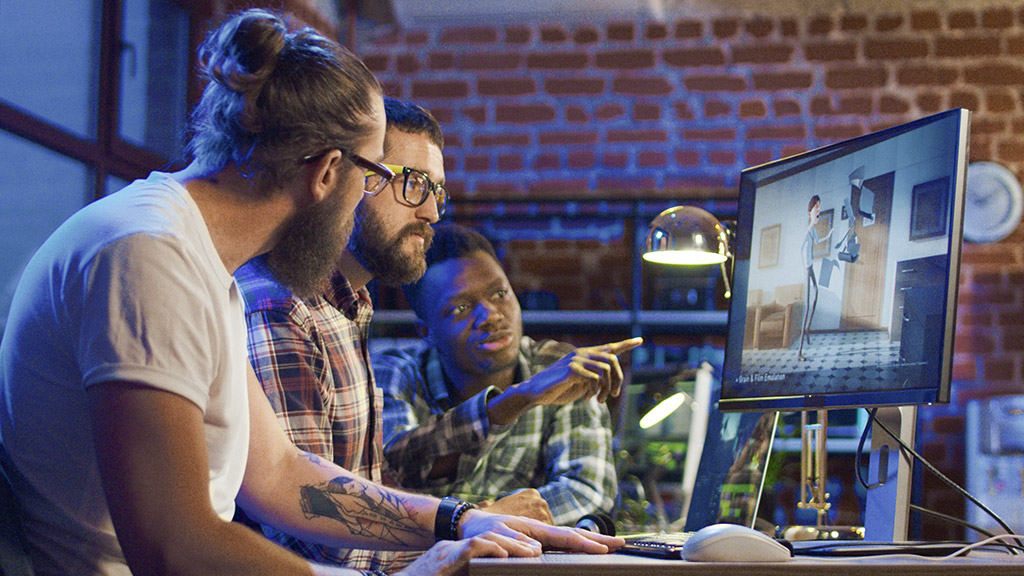Autodesk Maya, a flagship product in the Autodesk suite, is an industry-standard 3D modelling and animation software and a go-to choice for animators, filmmakers, game developers, and designers. It provides a powerful suite of tools for creating visual effects, 3D content, and immersive animations.
The following three Autodesk videos will support your learning in the Foundations module.
User Interface
| Video link | Purpose and duration |
|---|---|
| Navigating the interface | Discover the menus, options, tools, and controls commonly used in Maya. Get an overview of menu sets, shelves, workspaces, layout views, and basic animation controls. (8:44m) |
Basic Tools
| Video link | Purpose and duration |
|---|---|
| Working with scenes | Learn to keep your files organised and portable using Maya projects. Learn about different file types Maya can read and how you can save files intelligently using Save Incremental and Autosave. (7:30m) |
| Modelling basics | Learn about 3D modelling tools and workflows in Maya. Work with the Modelling Toolkit and build a simple primitive model, manipulating its vertices, edges, and polygon faces. (13:05m) |
The following Autodesk video will support your learning in the Key Animation module.
Basic Workflow
| Video link | Purpose and duration |
|---|---|
| Animation basics | Learn to create keyframes to start animating geometry around the scene. You’ll add and edit keyframes on the timeline. Working in the Graph Editor, you’ll discover how to modify the structure of your keyframes and change the timing of your animation. (10:00m) |
The following four Autodesk videos will support your learning in the Digital Production module.
Manipulation Tools
| Video link | Purpose and duration |
|---|---|
| Adding materials and textures |
Learn about:
|
| Creating a UV layout |
Learn about:
|
| Lighting and rendering |
Learn about:
|
| Rendering with Arnold |
Learn about using:
|
The following six Yoobee videos and three Yoobee playlists will support your learning in the Final Image module (i.e. Final Sequence topic).
Camera
| Video link | Purpose and duration |
|---|---|
| Creating animated cameras |
Learn about:
|
Maya Lighting
| Video link | Purpose and duration |
|---|---|
| Direct lighting - Software lights (Playlist) |
Learn about:
|
| Direct lighting - Arnold lights (Playlist) |
Learn about:
|
| Using and adding shadows to your lights |
Learn about:
|
| Using the Decay attribute |
Learn about:
|
| Overview of Maya's Lighting Editor |
Learn about
|
| Introduction to indirect lighting and setting up image-based lighting |
Learn about
|
Rendering in Maya
| Video link | Purpose and duration |
|---|---|
| Learning the Main Render Setting |
Learn about
|
| Using the Render setting window |
|
| Creating and setting up render layers |
Learn about
|
